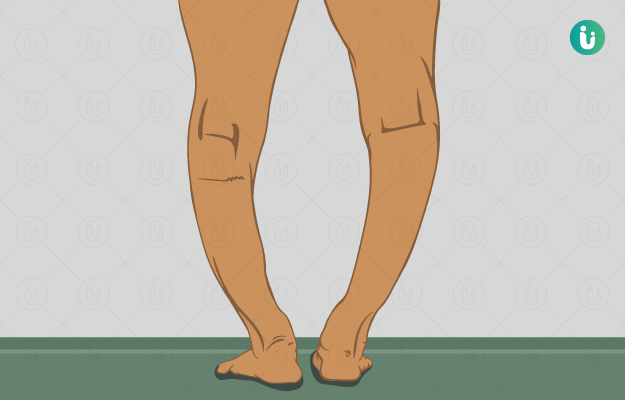What is Rickets?
Rickets is a disease caused by vitamin D and calcium deficiency. It has a major impact on bone health, as well as growth and development of children and adolescents, proving to be lethal even in adulthood as it causes soft, weak and painful bone growth and deformities. This condition is termed as rickets in children and osteomalacia in adults.
What are its main signs and symptoms?
Early clinical signs and symptoms include bone pain, skeletal deformities, dental problems, poor growth manifested in the forearm, knee and costochondral junctions (where the ribs attach to the breastbone), which are sites of rapid bone growth and development, and fragile bones. A delay in the closure of the fontanelles (soft spots on top of a baby’s head) and the bossing of skull bones are seen in infants. There may be kyphosis or scoliosis (spine bent forwards or sideways) in older children. Non-skeletal symptoms include pain, irritability, delay in motor functions and poor growth. Rickets can be mistaken for skeletal dysplasias, as they have similar clinical features.
What are the main causes?
Lack of vitamin D and calcium is the most common cause of rickets. The following are the commonest reasons for these deficiencies
- Malnutrition.
- Malabsorption of vitamin D.
- Inadequate exposure of the skin to sunlight.
- Pregnancy.
- Prematurity.
- Obesity.
- Kidney and liver diseases.
- Certain anticonvulsants (for convulsions) or antiretroviral (for HIV) drugs.
The mineralisation defects caused by calcium and phosphate deficiency are classified as calcipenic and phosphopenic rickets, respectively. Mineralisation defect, either isolated or secondary to vitamin D deficiency, leads to the accumulation of osteoid (unmineralised component) in the bone tissue below the growth plate. This causes bones to weaken and bend over a period of time.
How is it diagnosed and treated?
The diagnosis of vitamin D deficiency is made by laboratory tests including blood tests for calcium, vitamin D levels, alkaline phosphatase, phosphorous and parathyroid hormone levels. X-ray tests are advised, where changes in bones can be seen. A bone biopsy might be needed and is the most accurate method to diagnose osteomalacia or rickets.
The nature and severity of the deficiency determine the appropriate dosage of vitamin D. Vitamin D and calcium supplementation are initiated and maintained until the X-ray results are normal.
Preventive measures:
Several simple measures can help prevent rickets. You must:
- have a healthy diet that includes dairy products and eggs.
- spend time outside, especially in the morning sun.
- take vitamin D supplements after consulting a doctor.

 Doctors for Rickets
Doctors for Rickets  OTC Medicines for Rickets
OTC Medicines for Rickets



















